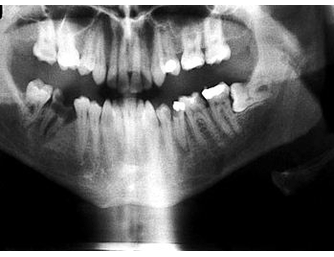CHARACTERIZATION AND ANTIBIOTIC SENSITIVITY OF BACTERIA IN OROFACIAL ABSCESSES OF ODONTOGENIC ORIGIN
Keywords:
Antibiotic susceptibility, Odontogenic infection, Orofacial abscesses, Sana’a, YemenAbstract
Background: Odontogenic infections vary from minor abscesses to superficial and deep infections that lead to acute infections in the head and neck area that may threaten the patient's life. The objectives of this study are to identify bacteria accountable for orofacial infection of odontogenic origin and patterns of their susceptibility to drugs in order to provide a superior understanding of dental infection management in Yemen.
Methods: The study was conducted on a selected group of patients, regardless of gender and age, who suffer from severe to moderate orofacial infections of odontogenic origin and were admitted to the dental clinic at the Republican University Hospital in Sana'a city. Sample of pus was collected and the bacteria were identified by cultivation in suitable medium and then identified by standard bacteriological techniques. Antimicrobial susceptibility testing was also performed using the Kirby-Bauer disc diffusion method.
Result: A total of 118 cases were positive for bacterial culture, 63 males and 55 females ranged between 5 and 65 years of age, most of them in the age group> 45 years (39.8%), 51.7% had dental abscesses and 48.3% had periodental abscesses. Staphylococcus aureus, Bacteroides species and Staphylococcus epidermidis were isolated from patients with dental abscesses, Staphylococcus aureus, Bacteroides species, Staphylococcus epidermidis and Streptococcus pyogens from perio-Dental abscesses. The most prevalent bacteria were Staphylococcus aureus (about 63% of the total isolates), more than 40% of which were resistant to ceftizoxime, calithromycin, augmentin, tetracyclines, erythromycin and oxacillin. While Staphylococcus epidermidis showed less antibiotic resistance than Staphylococcus aureus. As for the Bacteroids species, it was sensitive to metronidazole and clindamycin (100%), augmentin (98.6%), calrithromycin (94.4%) and finally vancomycin (76.1%).
Conclusion: An elevated occurrence of bacterial isolates was discovered, and Staphylococcus aureus was dominant.Most of the isolated bacteria were resistant to diverse classes of antibiotics. Appropriate antibiotics should be administered based on the bacterial isolates, culture sensitivity, and clinical course of disease.

Peer Review History:
Received 12 October 2020; Revised 18 November; Accepted 27 December; Available online 15 January 2021
Academic Editor: Dr. Asia Selman Abdullah , Al-Razi university, Department of Pharmacy, Yemen, asia_abdullah65@yahoo.com
, Al-Razi university, Department of Pharmacy, Yemen, asia_abdullah65@yahoo.com
Reviewer(s) detail:
Dr. Gulam Mohammed Husain , National Research Institute of Unani Medicine for Skin Disorders, Hyderabad, India, gmhusain@gmail.com
, National Research Institute of Unani Medicine for Skin Disorders, Hyderabad, India, gmhusain@gmail.com
Dr. Nuray Arı , Ankara University, Turkiye, ari@ankara.edu.tr
, Ankara University, Turkiye, ari@ankara.edu.tr
Dr. A.A. Mgbahurike , University of Port Harcourt, Nigeria, amaka_mgbahurike@yahoo.com
, University of Port Harcourt, Nigeria, amaka_mgbahurike@yahoo.com
Downloads

Published
How to Cite
Issue
Section

This work is licensed under a Creative Commons Attribution-NonCommercial 4.0 International License.









 .
.